Columns
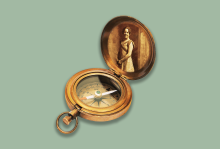
EACH WEEK IN my immigration-literature graduate seminar, we examine one book that focuses on the immigrant experience. So far, we have read about Norwegian, Italian, and Japanese experiences. Our upcoming texts center the experiences of Polish Jews, Koreans, Nigerians, Senegalese, Mexicans, and Muslims, among many others. Faith plays a central role in each book we’ve read so far, both fiction and nonfiction. In each text, the matriarch of the family brings the faith of her mother country into the United States. The matriarchs are themselves the texts for the survival of the faith in these families.
In my family, my grandmother was the compass for our faith traditions. We grew up Catholic and later became nondenominational. We explored many expressions of faith before we found one that fit. As a family, we retained many of our Catholic traditions, because they are woven into who we are. It’s a complicated relationship, and one that we greatly value.
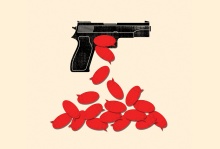
LIKE MANY PEOPLE, I have spoken out more times than I can count under the literal and metaphorical banner of “Silence Is Violence,” my voice growing louder and louder in the past several years.
Yet recently, on one matter, I found myself having fewer words, not more. Gun violence rendered me mute.
The death counts that rise in real time. The fact that before we have comprehended one shooting, another has occurred. The relativizing of value and shifting calculus of loss we have begun to accommodate this “new normal.” The reality—contrary to what one would think based on media attention and political rhetoric—that mass shootings account for less than 2 percent of U.S. gun violence (suicides, by contrast, account for nearly 66 percent).
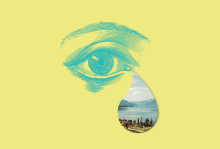
OVER TWO MONTHS, I’ve been on three pilgrimages through stories of oppression in the U.S., water figuring prominently in each. Leaving the Whitney Plantation and rolling through nearby Louisiana bayous, I imagined African-descended men and women masking themselves in troubled waters from slave catchers. Rolling through the desert between San Antonio and McAllen, Texas, I imagined people of Spanish, African, Aztec, Mayan, and Incan origin scouring barren land in search of water, and flourishing.
Then I spent a week with my friend Ruth Anna Buffalo and her family and friends. Ruth is an enrolled member of the Mandan, Hidatsa, and Arikara Nation and the first Native American Democratic woman elected to the North Dakota legislature. Early in our time together, Ruth shared the story of her tribe’s movement north, from present-day Standing Rock. The Mandan settled in the bottomlands of Elbowoods.
From 1949 to 1956, the U.S. Department of the Interior built the Garrison Dam and intentionally flooded the treaty-bound lands of the Mandan, Hidatsa, and Arikara Nation, along with more than 20 other tribes, to save white communities experiencing natural flooding downriver. They named the human-made reservoir Lake Sakakawea. Elbowoods—the land where Ruth’s family flourished—is now under the water. And whites have claimed the “lakefront” property.
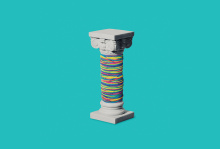
IN MY TEACHING, I seek to educate students toward a robust democracy. Religious education is so often engaged with abstract concepts such as “peace” and “justice” without considering how to put these ideas into daily action. What does religious pluralism in the real world look like? How do we prepare clergy and community to face the urgent issues of our time, which are sometimes caused by religion? How can interfaith solidarity deepen solutions and build durable partnerships that will benefit all creation, especially in times of state violence?
The starting point of many theologies of religious pluralism is the notion of salvation and how a particular tradition views the “afterlife.” This paradigm, not surprising, is often future-oriented; it is hard to translate into behaviors that are inclusive not just at the belief level but also in the lived religion of individuals, communities, and institutions.
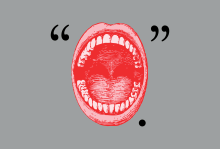
“NO” IS A COMPLETE SENTENCE. I said it recently to a U.S. Capitol Police officer when he asked me to stop praying the rosary for immigrant children and to move. He then arrested me for “crowding, obstructing, or incommoding” in the rotunda of the Russell Senate Office Building in D.C.
That day the police arrested 71 Catholics. In the parlance of Christian nonviolence, we brought the spiritual power of our prayer to a site of mortal sin—specifically the offices of powerful lawmakers who support, through cowardly and often deliberate consent, caging immigrant children. The border patrol apprehended 69,157 such children at the U.S.-Mexico boundary between October 2018 and July 2019, seven of whom have died after being in federal custody.
What is the significance of Catholics and other Christians saying “no”? At its most authentic, religious faith builds moral muscles that push the human species to become more generous and just and guard against it backsliding into barbarity. While shallow religion shapes people for instinctive compliance to authority, ecclesial and secular, a deep faith tradition trains for moral discernment and formation of conscience and provides a narrative for how to resist immoral actions.

Hurricane Katrina in 2005 was one of the worst environmental justice disasters in modern U.S. history. It was also one of the first times that I, then a teenager, consciously connected animal justice and racial justice. Kanye West’s declaration “George Bush doesn’t care about black people” is often remembered as the statement on racism in Katrina, but another expression that needed no words circulated among black people in the hurricane’s immediate aftermath: a picture of pets being evacuated on an air-conditioned bus.
While black people were abandoned, dead, and dying on rooftops, corpses floating bloated in flooded streets, people’s pets were evacuated to safety.
Black people have long understood as racist the disparate treatment of nonhuman animals and black people. In 1855, Frederick Douglass wrote that “The bond-woman lives as a slave, and is left to die as a beast; often with fewer attentions than are paid to a favorite horse.
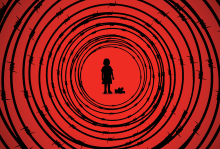
America seems to be in a perpetual state of war. We’ve militarized our borders and violently separated children from their families. We are inundated with horrifying images, such as that of the father and daughter who lost their lives to the Rio Grande.
I am not from the border, but the border runs through me.
War is not new. Its effects are felt from generation to generation, a collective trauma from our ancestors to our living bodies. War lingers on the land and in our bones. We have a responsibility to speak out against destruction and to rise to meet the needs of the most vulnerable. It is clearly a time for spiritual activism.
Some churches have fallen short in speaking out. They have fallen short in meeting the needs of God’s children.
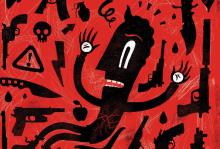
IN THE WAKE of the terrorist attacks on two mosques in Christchurch, New Zealand, earlier this year, Prime Minister Jacinda Ardern seamlessly incorporated Muslim rituals into the public rites of grieving. Her response to the attacks was striking for its cultural competence in engaging Muslim tradition and also projecting it in ways that engaged a broader audience to build empathy and not further structural violence. It allowed for immediate national unity and rehumanizing of the Muslim community.
The prime minister’s response to the violent attacks in New Zealand pointed out the importance of extending interreligious education to state actors.
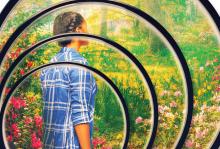
TO LIVE A LIFE of justice, we must also live a life of constant self-reflection. My work as a writer, activist, and woman of faith informs my actions in matters of justice, which I call soul work. Yet, if I cannot examine the ways I am complicit in oppressive structures, I become part of the problem. I never want to assume that my justice work, my soul work, is not in need of introspection.
I learned about spiritual activism from reading AnaLouise Keating’s scholarship of Gloria Anzaldúa’s theopoetic work, which focuses on navigating between spaces such as home, language, the academy, gender, and spirituality, among other conceived and imagined spaces. A theopoetic work wrestles with the tension of in-between spaces when theological language fails us and we must instead take up a form of spiritual activism—advocating for our own inner healing while addressing the injustices of the world.

SUMMER SIGNALS FREEDOM. If you are anything like me, two words in particular shimmer with the season’s promise of boundlessness: Summer reading.
At the beginning of Black History Month back in February, however, I decided to restrict my reading for this year. Some friends and I embarked on what I christened a “Year of Reading X”—a year of reading only, or mostly, books by black, Latinx, Asian, Indigenous, and other authors of color.
While recent discussions around the whiteness of the publishing industry and Western canon have motivated many to make racially aware reading commitments, exclusively reading black authors or authors of color is not novel. People of color have long been aware of the whiteness of the conventional literary world and have negotiated it accordingly, finding and creating our own spaces. What sparks my year of reading, then?

DEBATE THE CHOICE all you want, but what was radical about a congressional candidate’s ban on press at an August public town hall event wasn’t her decision to shut out journalists. It was how publicly she was willing to attempt new things, to try to make democracy work for a new slice of participants.
“We are genuinely trying to create environments where our constituents feel comfortable expressing honestly and engaging in our discourse,” she tweeted. “Genuine Q?: how should we label a free campaign event, open to all, that’s a sanctuary space?”
Though she and other justice-minded public officials may not use these words, what they are attempting is a kind of human-centered design.
Human-centered design is fairly self-explanatory: When designing systems, services, or products, creators place humans at the center. But in practice, this can be radical: If my focus is to make an experience better for each user, I will design for individuals, not market trends; I will design for the outliers and anomalies, not the majority.
And, critically, it requires empathy, using every tool I can muster to fully understand what the user experiences as they interact with the system, solving problems worth solving.
Of course, the best way to learn the process is to go through it yourself.
Designer Antionette Carroll lives in Ferguson, Mo. After Mike Brown was killed in Ferguson, she asked herself, “What should designers do?”

THERE IS THIS unsightly patch of spider veins behind my right knee. It started out years ago after my body had carried to term the weight of three pregnancies and endured the recovery associated with childbirth. A little spider vein turned into a few, which turned into a patch that eventually went from simply visually unappealing into painful and bulging.
I had hoped an injection would take care of both the pain and the patch of blues and greens. However, after closer examination via ultrasound, I learned that a larger vein, which to my untrained eye had nothing to do with that painful patch, was actually the key to treatment. We couldn’t start on the surface. We had to dive deeper.
Now there’s an analogy.
It hasn’t been enough for the church in the United States to talk about racism and sexism. Building relationships across racial divides is good, but it isn’t enough. Your new black, white, Asian, Latino, or Native friend doesn’t give you a pass. Sure, it’s a great photo op or church story, but deep down inside it will take more than everyone making a new group of friends.
It hasn’t been enough to talk about unity without addressing the cost of uniformity. It hasn’t been enough to research the most segregated hour of the week and then quote Rev. Martin Luther King Jr. The unsightly and painful patch of damaged veins goes much deeper and requires far more than a single injection. The brokenness of the church requires surgery—amputation, transplant, transfusion, or a combination of all of the above. The healing of the church requires a Jesus that is not dressed in Sunday best because there never was such a thing.
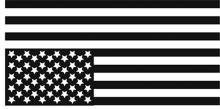
The flag should never be displayed with the union down, except as a signal of dire distress in instances of extreme danger to life or property.
—U.S. Flag Code
IT SEEMS RATHER odd that a normal part of my catching-up-at-the-end-of-the-day conversation with my partner is discussing the whiplash of political events. Leaks are not conversations about the sink. Notes are not to be turned into the teacher. Tapes are not our latest vintage find. They are all political subjects and part of the ever-evolving new normal. And just as spring was forcing its way into bloom, it was announced that Officer Betty Shelby of the Tulsa (Okla.) Police Dept. was found not guilty of first- degree manslaughter in the shooting death of unarmed Terence Crutcher.
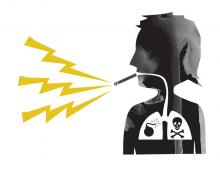
FOLLOWING IS a conversation between an aging, award-winning humor columnist and a young man who, in his short life, probably only earned an award for Most Tattoos On One Arm.
Me: Excuse me. What’s that metal thing in your mouth?
He: It’s an electronic cigarette.
Me: Dude, you can’t smoke in here. Even if we’re the only ones in this hotel bar, and although it harkens back to simpler times, a time when men were men, and ...
He: There’s no smoke, just steam. It’s a noncombustible cigarette.
Me: Cool phrase that, “noncombustible cigarette.” Yours?
He: Nah. I heard it on a commercial. Some people call it an e-cigarette.
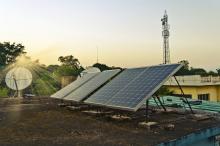
ONE OF THE most destabilizing facts of the last five years is this: The price of a solar panel has fallen 75 percent. The engineers have done their job, and that offers many possibilities.
We usually look at what the developed countries are doing with renewable energy, such as the fact that there were days during summer 2014 when Germany was generating three quarters of its power from solar panels (Germany!). But the most amazing miracles—and it doesn’t really stretch the word “miracle”—are happening in the poorest places, where for the very first time lights are blazing on.
Take rural Bangladesh, where fossil fuel has barely penetrated in the 200 years of its ascendancy in the West. There’s no grid—at night it just goes dark. Until the last few years, when low-cost solar panels and innovative financing arranged by groups such as the Grameen Bank have allowed the very rapid spread of solar panels. How rapid? As many as 80,000 new connections a month, which is far more than in the United States. Fifteen million Bangladeshis live in solar-powered houses already, and the government is hoping to have the entire nation hooked up by 2020.
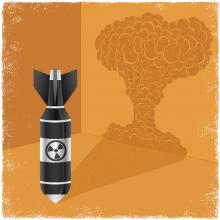
AS YOU READ this column, diplomats from the United States, the United Kingdom, France, Russia, China, Germany, and the European Union are working with their Iranian counterparts to finalize a deal concerning Iran’s nuclear program. I strongly believe that Christians should support the framework for this deal, announced in Lausanne, Switzerland, on April 2, as the best chance to prevent Iran from becoming a nuclear-armed state and—equally important—the best chance for the United States to avoid armed conflict with Iran.
In the days following the announcement of this framework, Sojourners authored and published a statement of support, which was signed by more than 50 Christian leaders (see statement here). Part of that statement reads as follows: “It is the sacred responsibility of all those entrusted with political power to pursue, with patient perseverance, every option that makes the destruction of war less possible, in order to protect human life and dignity. This becomes an even more urgent moral and spiritual imperative when we have the chance to prevent the further spread of nuclear weapons, with their terrifying potential of mass destruction ... a goal that reflects the binding commitments made by 191 U.N. member states, including the United States, under the Nuclear Non-Proliferation Treaty (NPT).”

AS WE SWING into the 2016 presidential campaign, we Americans can be certain of at least one thing: We will be treated to another round of very public arguments about the role of religion in our republic. If this were a boxing match, and if past patterns persist, the title of the bout would be Christian Nation vs. Secular Country. The sides, more eager to mobilize their own than have a conversation with the other, will happily seek to bludgeon one another.
Thankfully, a number of writers have set out to complicate this picture in a way that adds both color and hope. Peter Manseau’s One Nation, Under Gods and Denise Spellberg’s Thomas Jefferson’s Quran are beautifully written accounts of our interfaith country. By interfaith, I mean both that there were people of different faith persuasions present from our earliest days, and that they constantly bumped into one another as they established their communities and sought to build up this country.

AS AN occasional participant in a book group, I’m happy to report that the wine at the last one was pretty good. Also the fellowship, the spirited conversation, and, finally, before we ran out of time, discussion about the book, which consisted mainly of how most of us didn’t finish it, or start it. In my case, however, I couldn’t put it down.
It was The Lost City of Z, a recounting of an intrepid explorer’s frightening ordeals in the unforgiving jungles of the Amazon, which ultimately ended when he succumbed to cannibalism. It was a chilling read, one that convinced me to confine my travels exclusively to the continental United States. Because if there’s anything that ruins a good walk, it’s being eaten by your own species. According to the book, at the turn of the last century certain tribes in remote South America believed they could spiritually cleanse themselves by devouring their enemies. (Fortunately, that practice has died out, except for in a few red states during primary season.)
I read every word of that book, usually with the covers pulled tightly around me and all the lights on, while making sure that I didn’t appear delicious to anyone in the vicinity.

ONE OF MY favorite descriptions for the people of God, what the New Testament calls the “body of Christ,” is the evocative language of “the beloved community” used by Martin Luther King Jr. during the civil rights movement.
A beloved community is a powerful vision of a new coming together, a new community that welcomes all peoples in their diverse ethnicities and nationalities. Everygroup, clan, and tribe is included and invited in. That dream and vision undergirded King’s movement for civil and voting rights, both spiritually and philosophically, and deeply reflected his own underlying moral belief and hope as a Christian minister.
Yet in one of his most famous quotations, King also said this: “I am ashamed and appalled at the fact that 11 o’clock on Sunday morning is the most segregated hour in Christian America.” He said this in 1953, while he was still associate pastor at his father’s Ebenezer Baptist Church in Atlanta. But obviously, and most painfully, that quote is still true today.
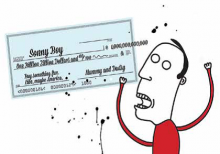
WITH THE NEXT election still almost 18 months away, you’d think the media would focus on more important topics in the meantime, such as where Kim Kardashian is spending her next vacation.
But you’d be wrong. It’s officially time for the press to ignore more newsworthy subjects in favor of endless coverage of the election “horse race,” but without the legendary good sense horses bring to such occasions.
ISIS on the move, taking the Middle East back to the 7th century? Forget that. Let’s talk about Jeb Bush’s 2016 run, although the hook could be how ISIS reminds people of the disastrous policies of the last Bush in the White House. Or was it the one before that? I can’t remember. (In hindsight, the Bush parents should have named alltheir sons George, so presidential ballots could be printed in bulk, enough for several elections.)